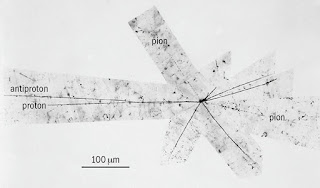(Into the first string of Bounded Ages)
 When the Dragons of the Sainted Mounts came to dwell in the eighth infinite realm some seven millennia ago, lured by its incontestable majesty, the land was already ancient, already ages old, already teeming with a vast array of Elemental kind. Yet, the leave given those repentant beasts, those Dragons, by the governing godheads—to walk the mortal demesne and know life, to roam its set skies and find freedom in flight—came with a price. The tribes of the realm’s center most Divide, unlike their primarily fey southern neighbors, were without hereditary Right, and the nurture and defense of those incapable societies became the Dragons’ cost.
When the Dragons of the Sainted Mounts came to dwell in the eighth infinite realm some seven millennia ago, lured by its incontestable majesty, the land was already ancient, already ages old, already teeming with a vast array of Elemental kind. Yet, the leave given those repentant beasts, those Dragons, by the governing godheads—to walk the mortal demesne and know life, to roam its set skies and find freedom in flight—came with a price. The tribes of the realm’s center most Divide, unlike their primarily fey southern neighbors, were without hereditary Right, and the nurture and defense of those incapable societies became the Dragons’ cost.
Stymied, those monstrous converts instead conferred a wide range of magics unto five of the thirty or so tribes in existence. In due course, the Lŷʈīr of the sea brushed plains, the Hĕʈädĕlră of the low lying woodlands, the El’sŭūr of the arid western cape, the Hĕmĕt of the bountiful east, and the Aɽmūr of the lush center lands were accorded the ability to transform themselves into the various beasts of the realm. Too, came psychical abilities, such as the prized art of divination—along with an essential wisdom that would eventually allow them to subvert destiny—and the uncanny power to speak into the minds of their fellow men, influence and control them. Yet further, they were granted the secrets to alchemy and necromancy.
The last of the critical Dragon Epochs was brought to a stuttering close by the Reign of the Un-Righted—a minor period that marked the Icarian horde’s first occupation of the Central Divide. That swift and irreverent Reign spanned but a paltry seventy years, yet its effects were far reaching. Elemental kind and the natural mystics descended of them became nearly as lore in the two millennia that followed those transforming seventy, and far less commonplace were those born Righted. Moreover, the Magian tribes, as they eventually became styled, chiefly the El’sŭūr and the Hĕmĕt, became as a scourge to the Central Divide and very nearly to the entire realm. What a stunning travesty of the human spirit were those millenniums, those seven hundred twelve thousand Days of Roving Dissension, for they saw the Sourced Magians become dissolute in regard to their magics, saw them gorge themselves upon that which had been conferred them—and it was that singularly minded greed that brought about the end of the Dragons, with but a lone beast escaping their treacherous thirst for power.
Principally, as the Historicists say, the Days of Roving Dissension began as an almost post-traumatic response to the Icarian occupation. Unsurpassed as their magics became, Magians were not without vulnerability. The brand of power bestowed them was dark, and bore the capacity to injure or kill a Magian in expenditure. In counter, Magians began to channel their magics into tangible articles—scepters, amulets, and less often rings and other forms of metallic jewelry, objects which gained in power as they were handed down from conceder to heritor—and devised a vernacular, A’shvelsūrin, for use in summoning their strengths. Therein, however, lay their debility, for Magians could no longer access their magics once whatever bespelled article that was imbued with their power had been destroyed.
The ruthlessness of the Icarian saw that vulnerability exploited and Magian numbers, long among the smallest tribes, dwindled. In desperation, the Magians turned to the Dragons, but over the long centuries the creatures had grown complacent, disavowing all responsibility to the tribes and retreating into their cavernous dens. Angered, the Magians slew one of the Dragons—Helspeth the Halcyon, a slovenly, solitary thing that had slept for decades in the base of Mount Sale. By way of their contrived spellcraft, the Magians infused the glowing core of Helspeth’s power into a scepter, and with that receptacle’s aid, drove the Icarian from their lands.
Fearing an eventual discovery of their deed and the retribution to be faced, the Magians began to slay the Dragons, waging a war that lasted nigh on a millennium—a war that waxed and waned as the scepter, that much coveted Harvester’s Wrath, changed hands. When but a single Dragon remained—he, Eldevel of the Forbidding Star—the Lord Dragon, truly one of the Earthbound Gods of that larger, illustrious Era, descended from the highest point of the Mountains of Fire, where that fettered godhead had for nigh on six millennia taken his repose. His immense figure eclipsing even that of Eldevel, largest and most fearsome of all the beasts, the Lord Dragon spoke unto the Magians, offering pact and prophecy.
“Gendesh, Goddess of the August Abode, the one called Harvester of Souls, brought forth unto this realm the Dragons—for heretofore the first Dragon Epoch, they were among the many creatures who guard the Depths of Death. It was I, the Lord Dragon, God of the Burning Mount, Crafter of the Temporal Form, who gave unto them their finite structures and consigned them act as protector and pedagogue to man.
“As I slept, the Dragons became self-content, shirking and delegating their duties.
“The time will come, however, when once more you find yourselves at your most desolate and you will face the Sainted Mounts and cry out towards them, beseeching aid. None will be forthcoming, you will have rid the realm of Dragons. Too, the Era of the Earthbound Gods nears its end, we who are fettered must retake our place amongst the divine. Spare this Dragon, Eldevel, so that when the time of chaos descends again, you shall through him your salvation find.”
“We fear his vengeance,” one among the Magians thinly returned.
“Then he shall be bound by obsidian and cast in the Enduring Stone. There, Eldevel will remain until summoned.”
“We possess not the power to influence him”—this from that same Magian. “How will he then be swayed?”
“Bring forth five maidens born of those Un-Sourced. They will bear unto you the means of Eldevel’s summoning and command.”
The Magians presented the Lord Dragon his behest— maidens taken from the Qĕss and the Nălẏr, the Arĕspús and the Dîrînîkă, and lastly the Nǽÿmīr—and he transformed himself into the semblance of a man. He lay with the young women, and upon that very eventide, they bore him each a babe—three sons and two daughters.
“I give unto this realm Thérün, Ánina, Xáel, Ithéana, and Arŏmil—the Dragon Righted who are Dæmonīækĕl, who are possessed of Rights comparable to your own magics, of the Right to call forth the Dragon of the Forbidding Star from his prison of glass, his casing of stone, and of the Right to speak into his mind, to influence and sway him.”
The Magians fell to their knees in obeisance, crying out.
“Harken to me!” the godhead necessitated. “Punishment for your misdeeds has not escaped you and the destinies that were once writ for the tribes have now accordingly changed. There are those of you who will repent, and in so doing, will find pardon and favor when the time of chaos descends again.
“Too, there are those among you who will forever seek to procure that which was never intended for you—and when you cannot procure it, you will then seek to bind it to you, and when you cannot bind it, you will then seek to destroy it, and when you cannot destroy it, you will then seek to make it obsolete. Age into age, the truth of your natures will be revealed and there will be further division and dissension among you as your magics become congruently defined.” Reverting to his imperial dæmonic form, the Lord Dragon then gave edict in a grating and infernal parlance—« HEED ME! »— before speaking yet other words which no tongue but that a blooded god’s can form.
Words that caused the Magians to bend their bodies over the ground, quaking and screaming as they covered ears that had suddenly become blistered and bled. Words that caused lightning to flash across the darkening sky—lightning which then raced down to strike the Dragon’s blood that soaked and stained the sand, turning it to salt. Words that bound Eldevel in obsidian and preserved him in the Enduring Stone. Words that opened the eyes of the newly birthed babes—eyes that brought frightened tears to their mothers and instantly entranced them. Words that returned the five young women and their godkind progeny into the protective folds of their respective tribes.
The Lord Dragon then ascended to the highest peak of the Sainted Mounts and spreading his massive wings, took flight, vanishing into the cosmos.
Click here to read more and follow along or pre-order your copy of the THE NORTHERN DIVIDE today!
Image: Durian - Sintel (black and white / blur adjustments)











